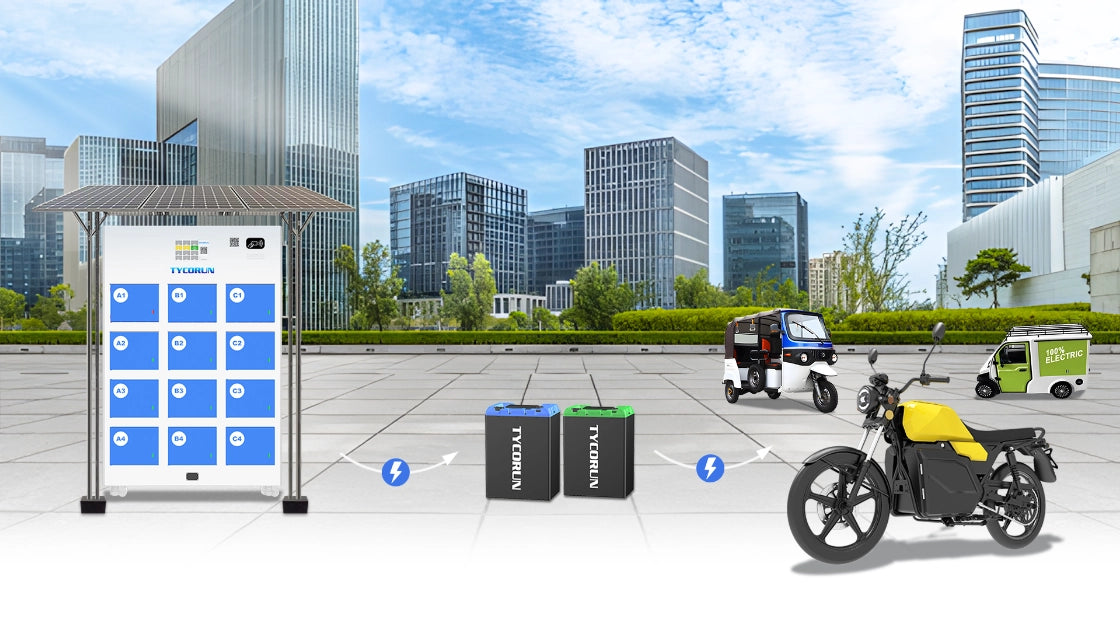
Main content:
- What Is Depth of Discharge and How Does It Work?
- Why Does Depth of Discharge Affect Battery Lifespan?
- How Do Different Battery Types Handle Depth of Discharge?
- How Can You Calculate Depth of Discharge Easily?
- What Are the Best Ways to Manage Depth of Discharge?
- How Important Is Depth of Discharge for Lithium Batteries?
- The Relationship Between Depth of Discharge (DOD) and Battery Cycle Times
- Conclusion
When people start using rechargeable batteries—whether in solar panels, electric vehicles, or portable devices—one of the biggest concerns is battery lifespan. Everyone wants their battery to last longer, but not everyone understands the factors that affect it. Among those factors, Depth of Discharge (DoD) plays one of the most critical roles.
If you have ever asked yourself why your battery seems to lose performance too soon, learning what is depth of discharge can give you the answers. In this article, we will explore how DoD works, why it matters, and how you can use this knowledge to extend your battery's life. Don't worry, we'll explain everything step by step so even beginners can understand.
What Is Depth of Discharge and How Does It Work?
Depth of Discharge (DoD) describes how much energy has been taken out of a battery compared to its full capacity. For example, if a 100Ah battery provides 40Ah of energy before being recharged, its DoD is 40%.

Here's the simple way to understand it:
- 0% DoD → the battery is still fully charged.
- 100% DoD → the battery is completely discharged (empty).
This measure is important because every battery has limits. Some batteries can handle deep discharges better, while others will wear out quickly if used too aggressively. Once you know what is depth of discharge, you'll be able to plan how you use your battery to balance performance and long lifespan.
Why Does Depth of Discharge Affect Battery Lifespan?
Battery life is not just about how many years you’ve owned it—it’s also about how many charge and discharge cycles it can complete. A cycle is one full use of the battery followed by a recharge.
The deeper you discharge a battery in each cycle, the fewer cycles it will deliver before its capacity fades. For instance:
- A battery cycled at 80% DoD might last 2,000 cycles.
- The same battery at 20% DoD could last 5,000 cycles or more.
- It's similar to bending a paper clip—if you bend it just a little each time, it will last longer. But if you bend it fully each time, it breaks faster. That's why managing DoD is one of the most important ways to improve battery lifespan.
How Do Different Battery Types Handle Depth of Discharge?
Not all batteries respond to discharge in the same way. Some tolerate deep cycles, while others are better preserved with shallow usage.

- Lead-Acid Batteries: Best kept around 50% DoD. Pushing them to 100% often leads to sulfation, reducing their lifespan.
- Nickel-Based Batteries: Can handle deep discharges but may suffer from “memory effect” if not fully cycled occasionally.
- LiFePO4 (Lithium Iron Phosphate): Very tolerant, often reaching 80–100% DoD safely, but still benefit from moderate discharge habits.
- Lithium-Ion Batteries: More advanced than lead-acid and offer longer cycle life, but DoD management still matters (we'll cover this in detail in a separate section).
By understanding what is depth of discharge for each battery type, you can make smarter decisions about usage and maintenance.
How Can You Calculate Depth of Discharge Easily?
The calculation is simple, and you don't need to be an engineer to figure it out:

What Are the Best Ways to Manage Depth of Discharge?
Here are practical beginner-friendly tips:

- Avoid complete discharge. Try not to drain a battery to 0%.
- Recharge at the right time. Lead acid battery should be recharged around 50% DoD, while lithium batteries can handle deeper discharges.
- Use a Battery Management System (BMS). This tool helps prevent over-discharge automatically.
- Right-size your battery. Larger battery capacity reduces the stress of deep discharges.
- Follow partial charging practices. Lithium batteries often last longer if kept between 20–80% rather than fully cycling each time.
Managing DoD wisely not only extends battery life but also ensures stable performance in the long run.
How Important Is Depth of Discharge for Lithium Batteries?
Lithium batteries deserve special attention because they are widely used in electric vehicles, solar energy storage, and portable electronics. Their performance and lifespan are strongly influenced by DoD.
- High Tolerance: Lithium-ion batteries can usually handle 80–90% DoD without major damage, making them more flexible than lead-acid.
- Cycle Life Advantage: A lithium battery cycled at 80% DoD might last 2,000–3,000 cycles, while the same at 20–30% DoD could exceed 5,000 cycles.
- Safer Range: For most lithium systems, keeping DoD between 20–80% is recommended for balancing performance and durability.
- EV Example: Electric cars typically prevent full discharge with built-in battery management, protecting cells from 100% DoD stress.
Understanding what is depth of discharge in the context of lithium batteries helps consumers make better use of advanced technology. If you're investing in a solar system or an electric vehicle, following DoD guidelines can save thousands of dollars over the lifetime of your battery.
The Relationship Between Depth of Discharge (DOD) and Battery Cycle Times
The cycle life of a lithium battery is the total number of times it can be charged and discharged under certain conditions. Research shows that cycle life is closely linked to the depth of discharge (DoD).
The deeper the discharge, the fewer cycles the battery can deliver. Regularly draining a battery too far will shorten its lifespan and reduce its capacity much faster. For instance, a battery that might last around 1,500 cycles at 50% DoD could drop to only about 500 cycles if discharged to 80% DoD.
Conclusion
If you’re worried about battery lifespan, you now know that one of the biggest factors is Depth of Discharge. Understanding what is depth of discharge helps you plan usage, avoid common mistakes, and get the most out of your investment.
By applying simple strategies—like recharging at the right point, sizing batteries correctly, and using protective systems—you can dramatically extend your battery’s service life. Whether for home solar, electric vehicles, or everyday devices, DoD awareness will pay off in performance, savings, and peace of mind.
Related Articles: Battery discharge warning, Battery discharge capacity, Battery discharge plateau
















